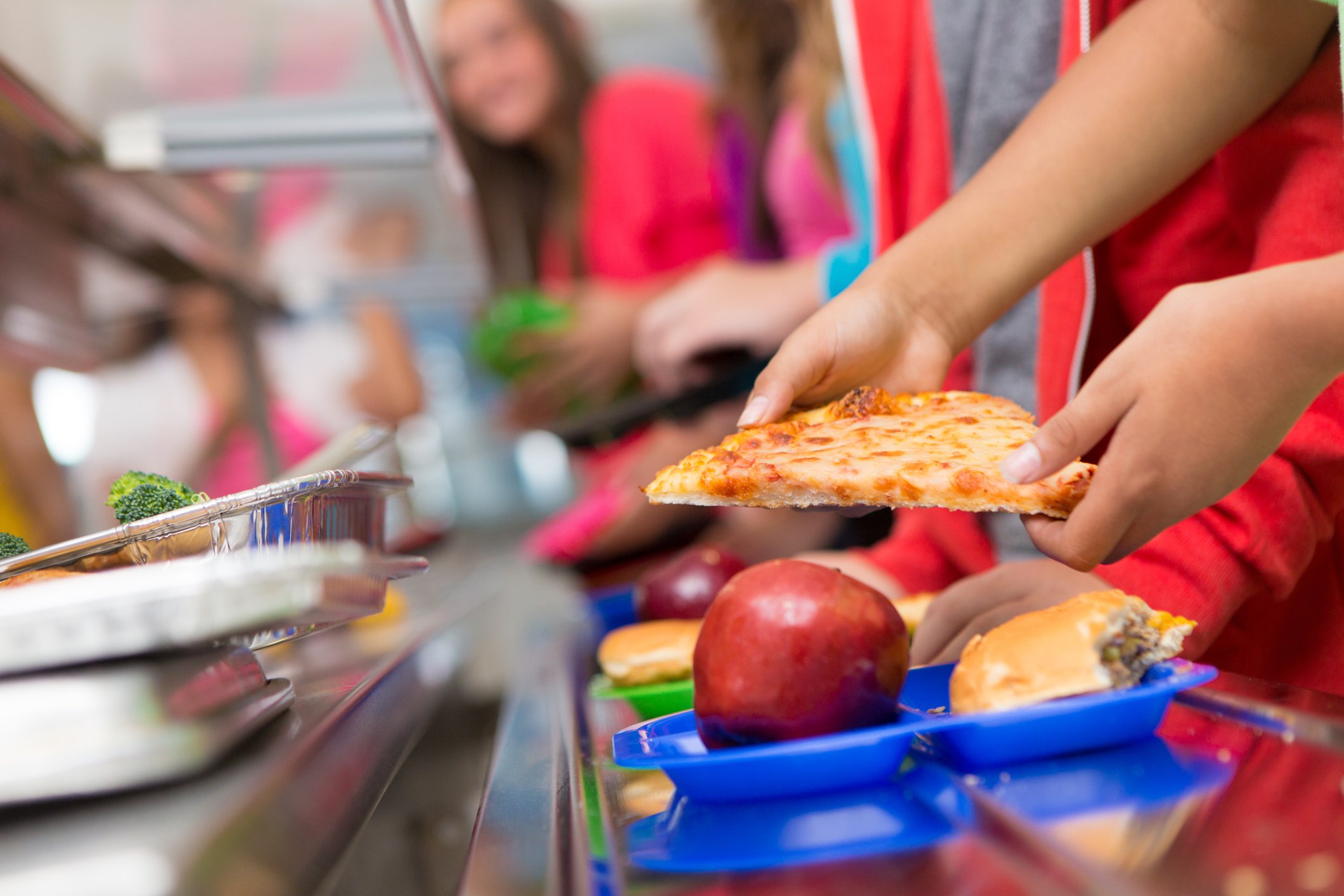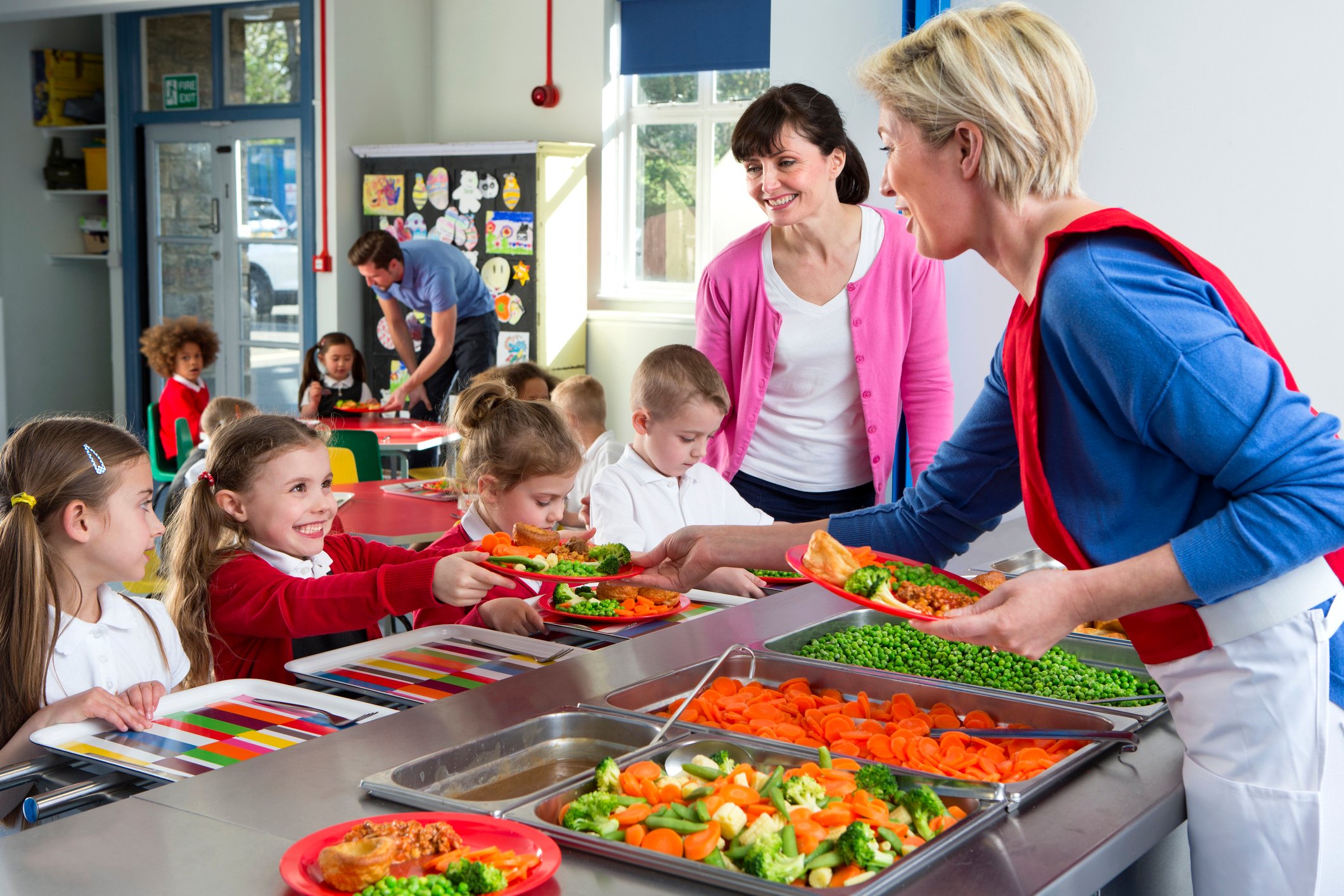In the U.S. alone, nearly 100,000 schools serve lunches to students every day. And for some of those students, it may be their only meal of the day.
While providing school meals helps combat hunger, (and incentivizes attendance in some cases) many countries’ school lunch programs are severely lacking in proper nutrition.
While they may not go hungry, kids in America and Canada, in particular, often receive meals that are dangerously high in unhealthy fats and sugars and low in vitamins, minerals, and other essential nutrients. Unfortunately, it’s this kind of eating that continues to contribute to the steep rise in childhood obesity around the world.
According to the World Health Organization (WHO), globally, “over 340 million children and adolescents aged 5-19 were overweight or obese in 2016.”
And it’s clear that unhealthy school lunches contribute to this public health crisis. In a 2010 study conducted by the University of Michigan, 38% of Michigan-area students who routinely ate school lunch were overweight or obese, compared to only 24% of children who brought their own meals. The study found that 91% of the children who brought lunch from home consumed fruits or vegetables on a regular basis, as compared to only 16% of children whose diets were dependent on the food provided by the school.
National School Lunch Programs
While there have been improvements with the National School Lunch Program in America, in addition to individual states and school districts taking actions of their own, most U.S. and Canadian schools have a long way to go before they are serving healthy school lunches. (Canada has yet to pass a national school lunch program of its own.)
Because the USDA subsidizes lunch food in the U.S., schools are often at the mercy of outdated nutritional standards that are designed to support industrialized agriculture over the needs of growing bodies and minds. Sadly, although school food service departments do get reimbursed for many of the meals they serve, their cost sometimes adds up to more than the reimbursement. This along with a growing school lunch debt problem, poor nutritional education, and increasing food costs, all contribute to meals high in subsidized factory farmed animal products, sugar, white flour, and other processed foods.
For parents who can afford it, having kids bring healthy options to school is a great way to go. But as long as tens of millions of families depend on school meals for a fundamental part of daily nutrition, we all have a stake in making them healthier.
4 Resources to Learn More About School Lunch Problems and Solutions

Here at Food Revolution Network, we’ve been following the progress of school lunch programs around the globe. These are some of the best school lunch reform resources that show:
- Why school lunches are the way they are;
- Ways in which they’re improving;
- Ways you can take action;
- And healthy school lunch recipes and ideas you can make at home.
1. Why School Lunches in America Are Unhealthy and 10 Ways You Can Take Action to Improve Them
Kids need healthy, well-balanced meals for their well-being and academic performance. In this article, we peel back the history so you can find out why school lunches in America have become so unhealthy — and how you can take action to improve the meals served in schools.
2. Quick, Easy, and Healthy School (or Work) Lunch Recipes You’ll Actually Look Forward To
For many parents, the best way to insure a healthy school lunch for their children is to make it themselves. And this sometimes presents a challenge for parents and even for “on the go” adults who need an easy and portable meal. Many people (especially kids) are picky-eaters who enjoy the taste of foods that might not be the healthiest. And then there are those of us who don’t have the time or energy to throw something nutritious together. These six nourishing recipes all take less than 30 minutes, which makes them ideal for a busy morning or a night-before meal prep session.
3. The Rising Problem of Student Lunch Debt and How it Affects Families
Over 22 million students receive free or reduced price lunches in America. Yet many of these same students are accumulating debt for school lunches as early as elementary school. In this article, you’ll find out the depth of the school lunch debt problem, what “lunch shaming” is, and how some districts are finding effective solutions.
4. 10 Revolutionary Ways School Lunch In America Is Improving (Plus Healthy School Lunch Ideas)
Despite the problems with school lunch programs in the U.S., individual schools and districts are leading the charge in improving school lunches. Discover 10 instances where we’re already seeing school lunch reform. And see how schools around the world continue to provide quality, nutritious meals for their students. Plus, you’ll even get a few ideas for improving and creating plant-powered school lunches at home.
Your Voice Matters

When most of us hear phrases like “government food subsidies” and “school district meal plans,” we tune out. These topics sound complicated, boring, and irrelevant to our lives. As a result, even people who care a lot about how we feed our kids tend not to get involved. But because hardly anyone engages, when you do speak out, even in a simple way, you can have a tremendous impact. As the t-shirt slogan puts it, “The world is run by those who show up.”
Some school administrators and food service managers object to serving healthy food to kids not because they think it’s a bad idea, but because the kids toss it in the trash. They’re not always wrong. Apples and broccoli are not nearly as exciting as the deep fried junk food they aim to replace. And some schools have, indeed, offered healthier options and found that students didn’t eat them. The key is often to combine healthier lunches with education and to bring creativity and care to the recipes, so that nutritious food is tasty and looks good.
Another important strategy involves giving kids some control and autonomy over their food options. Some schools offer a variety of meal options and let the students vote on their favorites. Over time, they develop a steady rotation of popular meals. And as students get more familiar with high quality, nutritious foods, their taste buds and eating habits evolve.
If you care about what kids are eating and about how taxpayer money is spent in your community, you have a right to speak up, and an opportunity to make a difference in school lunch programs. Your voice matters, and we hope these resources will help inspire you to take action for the health of future generations.
Tell us in the comments:
- What do you think of these school lunch program resources?
- What did a typical school lunch look like when you were growing up?
- What’s your experience of school lunches now?




